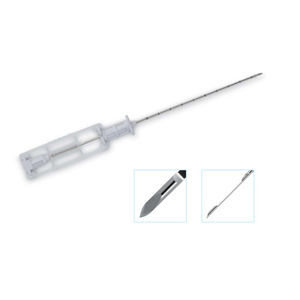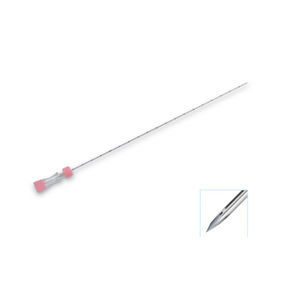

- Products
- Catalogs
- News & Trends
- Exhibitions
Histological biopsy needle ULTIMATE SETliver biopsyMenghinisafety
Add to favorites
Compare this product
Characteristics
- Applications
- histological biopsy, liver biopsy
- Needle type
- Menghini
- Options
- safety, echogenic, blunt, semi-automatic
- Diameter (gauge)
- 18G, 20G, 16G, 14G
Description
The first liver biopsy has been performed by Adolf Bingel in the year 1923. Since then, biopsy needles started to be fully developed and in the year 1938. Irving Silverman developed a bifid biopsy needle which is considered the "father" of all current tru-cut type biopsy needles. In 1958. Giorgio Menghini developed a vacuum assisted biopsy needle. Nowdays therapy choice is based according to biopsy results.
Semi-automatic tru-cut biopsy system
Cutting needle tip. Semi-automatic Tru-cut type system with, 2 depth penetrations (10-20mm), safety device. Depth marks on the cannula. Stylet connected to the system with notch to keep the specimen in, whistle and penetrating tip. Echogenic marker: inner Blunt and not cutting tip needle, depth marks, depth stopper and Luer Lock hub. Removable with trocar tip stylet. Echogenic marker: inner.
PRECAUTIONS
The procedure described is for guidance only. Each physician must, of course, evaluate the appropriateness of the procedure based on their clinical training and experience and the type of procedure to be performed. The needle must be used only once.
DIRECTIONS FOR USE
1. Inspect the package for damage and expiration date.
2. Examine the device for signs of damage.
3. Check that the product corresponds to the needle to be used.
4. Prep the patient in the standard and customary way for the procedure to be performed.
Catalogs
No catalogs are available for this product.
See all of Zamar Care‘s catalogs*Prices are pre-tax. They exclude delivery charges and customs duties and do not include additional charges for installation or activation options. Prices are indicative only and may vary by country, with changes to the cost of raw materials and exchange rates.
























